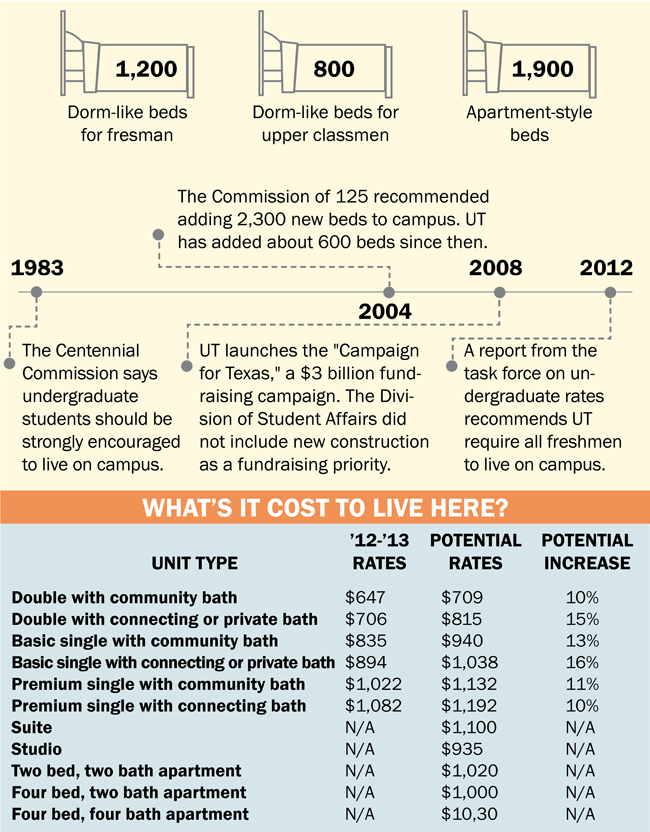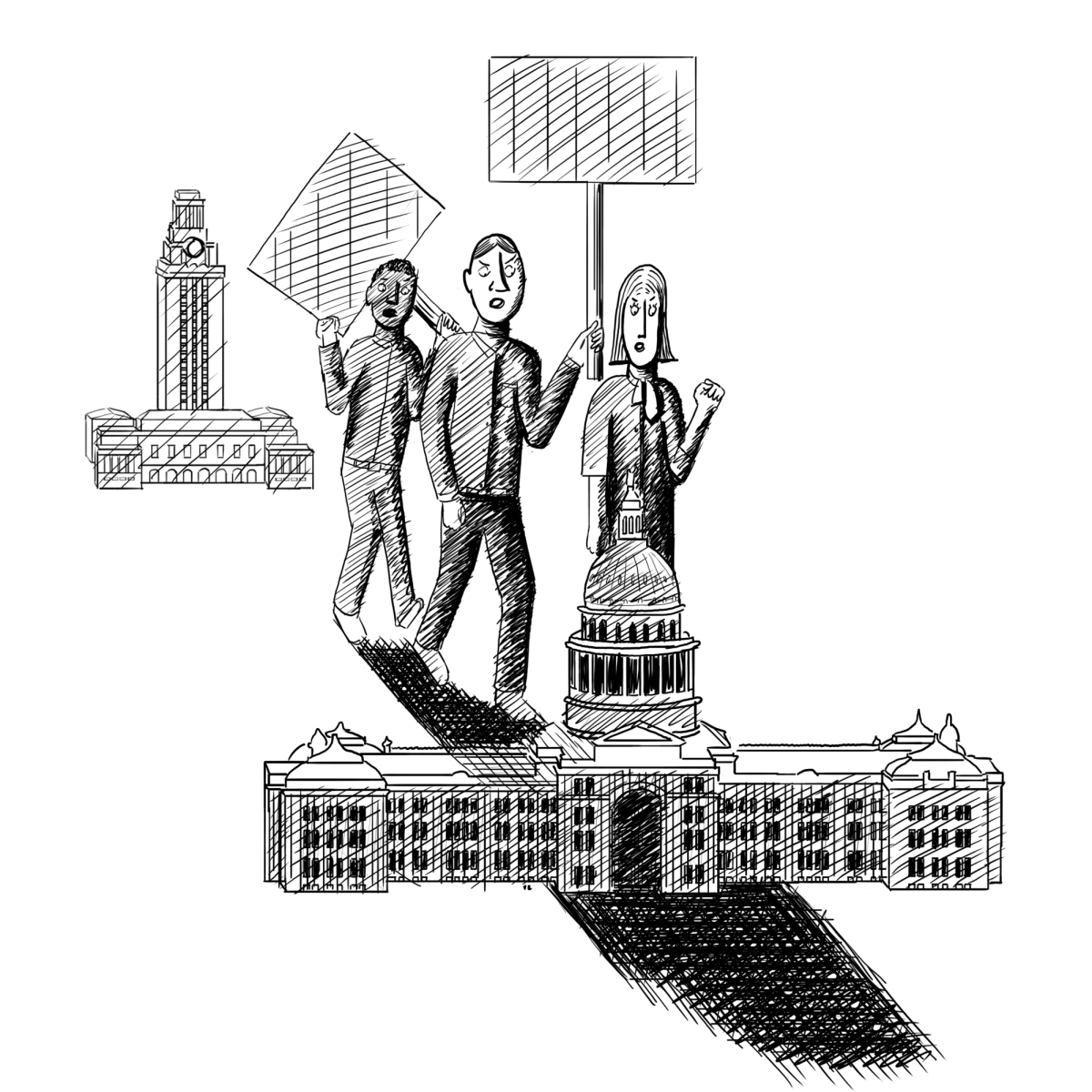The University is falling short of a demand for on-campus student housing by 3,900 beds, according to a previously unreleased report obtained by The Daily Texan.
The report, called the Residence Halls Needs Assessment, is an examination of student housing at UT and concludes that the University needs to expand on-campus housing options to meet student demand and remain competitive with peer institutions. Administrators say they are still reviewing the assessment, which was completed in September 2013 for $150,000 by two architecture firms. The assessment identified a net-demand of 3,900 additional beds on-campus — more than the total number of beds in Jester.
Since the report was completed, the only action University administrators have taken in regards to housing was increasing on-campus housing rates by an average of five percent for the 2014-2015 school year. Gage Paine, vice president of student affairs, said the University increased rates in part to prepare for future dorm construction costs, though, Paine said, construction plans are not in the preliminary stage of planning yet.
“We did a little bit of a jump this year, so we could be prepared for the next step,” Paine said. “There was some increase based on future plans.”
The assessment noted UT could raise rates by 10-16 percent across campus and not upset the housing market in Austin.
UT houses around 7,400 students every year in its 14 dorms on campus — more than half the number of students who apply for on-campus housing. Laurie Mackey, director of administrative services at the Division of Housing and Food Services, said more than 14,000 students applied for on-campus housing for the 2013-2014 school year. The University houses around 15 percent of its students, a smaller percentage than peer institutions who can house 20-30 percent of their student bodies, according to the assessment.
For decades, committees and reports have suggested the University increase on-campus housing. In 1983, UT’s Centennial Commission recommended the University add housing and encourage undergraduates to live on campus. UT added around 800 beds before 2004, when the Commission of 125, a group of UT community members and stakeholders who compiled a set of recommendations to improve the University in the following 25 years, recommended UT add 2,300 beds to campus. Ten years later, the University remains more than 1,700 beds short of that goal. The newest on-campus dormitory, Duren, was constructed in 2007.
In 2012, a report from the task force on undergraduate graduation rates recommended UT require all first-year students to live on campus. During the 2011-2012 school year, just 61 percent of freshmen lived on campus, according to the Residence Halls Needs Assessment.

“Right now, people are just thinking out loud, trying to put as many options on the table so we can figure out what makes the most sense for the campus in the next five years,” Paine said. “I would like us to know what we’re doing by next fall. Then there are a whole lot of other steps, but I would like us to have an answer.”
The Residence Hall Needs Assessment, which included a survey, reported students would prefer the University build future dorms near the center of campus, an area that is largely already developed. Paine said University administrators are considering constructing future dorms on the east side of campus, in accordance with the goals of UT’s most recent master plan, which aims to shift the center of campus eastward. Students prefer East Campus less than any other area for future dorms, according to the assessment.
In a survey, students said they would prefer the University build future dorms in the darker shades of green.
No matter what the next dorm looks like or where it is located, University administrators will not likely build another dorm the size of Jester.
“The best residence halls are smaller, like Moore-Hill,” Paine said. “Nobody wants to hear this, but some of the best residence halls are places with community baths because that’s where communities happen. Could we build something new like that? That would be pretty radical.”
Randall Porter, UT’s director of residential facilities, said the University prefers to build residence halls with 600 beds or fewer. In order to reach the 3,900-bed need laid out in the assessment, the University would have to add six-and-a-half dorms of that size.
“To get to 3,900 beds would be multiple construction projects, and even one construction project is going to be at least a four-year process,” Porter said. “It’s not likely we would be doing multiple ones at one time. My advice would be: Build one and make sure we can fill it because that 3,900 number is just an analysis. That doesn’t necessarily mean it reflects what we think the market is.”
Porter said the claim that there is a demand for 3,900 additional beds on campus surprised him, and he is not sure whether there is space to add that many additional beds.
“It would be challenging [to add that many beds],” Porter said. “We’d maybe have to build a little farther away. It’s hard to say, but there are a few possibilities.”




















